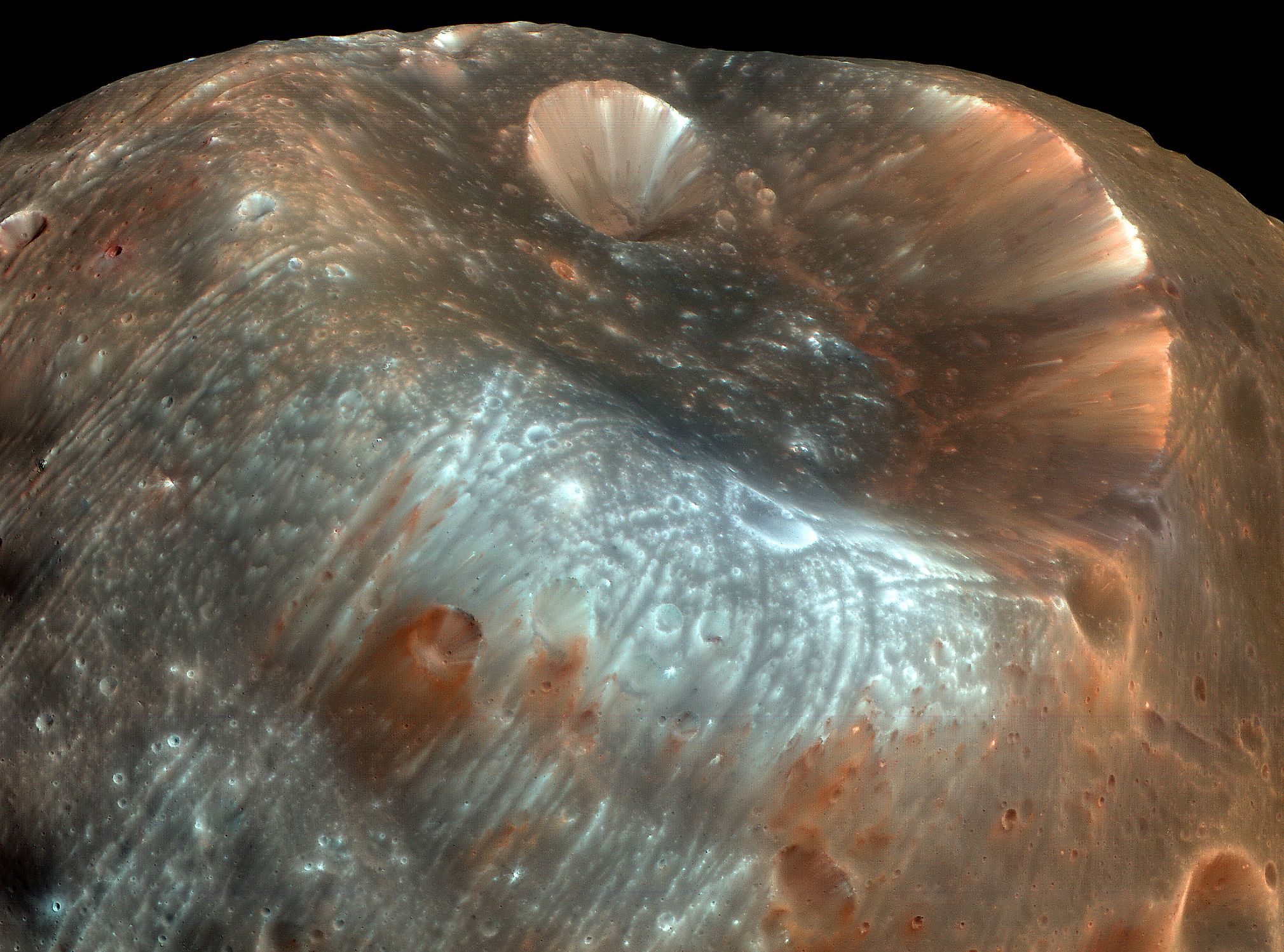
The Moons Of Mars
Earth and Mars are the only planets in the inner solar system that have moons. Earth has one moon and Mars has two. The two Martian moons are called Phobos and Deimos, and they are noticeably different from Earth’s moon. Phobos and Deimos are some of the smallest moons in the solar system. In fact, the two moons are so small and their gravity so weak that they are unable to become spherical in shape. Rather, the two moons are elongated and potato-shaped. Phobos is the larger of the two, having a diameter of 13.8 miles (22.2 kilometres). Deimos has a diameter of only 7.8 miles (12.6 kilometres). What are some of the characteristics of the Martian moons and how did they form?
Orbit And Rotation

Phobos and Deimos orbit at vastly different distances from Mars. Phobos is the innermost of the two, orbiting Mars at an average distance of 3,700 miles (6,000 kilometres). Deimos is much further away, orbiting Mars at an average distance of 14,576 miles (23,458 kilometres). Since Phobos is closer to Mars, it orbits the Red Planet faster than Deimos. Phobos completes one orbit of Mars every 7.6 hours, while it takes Deimos 30.3 hours to orbit Mars. Both Phobos and Deimos lack any rotational speed, and so the two moons are tidally locked with Mars. The same side of both moons constantly face Mars. Since Phobos is closer and larger than Deimos, it appears much brighter in the Martian sky. A full Phobos is about 33% as bright as a full moon on Earth. Meanwhile, Deimos looks more like a bright star, having a brightness that is only slightly higher than Venus in Earth’s sky.
Since the two Martian moons are so small, Mars never experiences a total solar eclipse. Solar eclipses do happen on Mars when Phobos and Deimos pass in front of the sun, yet the two moons are far too small to completely block the sun. Lunar eclipses, where the shadow of Mars is cast over its moons, happen every night and Mars due the orbital paths of Phobos and Deimos.
Origin Of The Moons

How Mars’s moons formed is one of the biggest mysteries in our solar system. There are two leading theories that seek to explain the origin of Phobos and Deimos. First is the captured asteroid hypothesis. Basically, this hypothesis states that Phobos and Deimos were once large asteroids that existed within the Asteroid Belt. At some point, their orbits were likely disrupted either due to collisions or the gravitational influence of the gas giants. Eventually, the two asteroids were captured by Mars’s gravity and became moons. Both Phobos and Deimos have shapes and compositions similar to some asteroids in the Asteroid Belt, leading to the proposal of the captured asteroid hypothesis. However, this explanation has its problems. Firstly, the orbits of Phobos and Deimos are nearly perfectly circular, something that is astronomically unlikely if the two moons were captured. Secondly, both moons are highly porous in their interiors, something that has not been observed in any asteroids. Thirdly, the composition of Phobos, although similar to some asteroids, is also remarkably similar to the Martian surface.
The second leading theory on the origin of Phobos and Deimos is similar to the explanation of how Earth’s moon formed moon formed. Mars, like every other planet in the solar system, likely underwent collisions with other forming planets many billions of years ago. Planetary collisions would have sent debris into Mars’s orbit, which could have then coalesced to form Phobos and Deimos.
The Fate Of Phobos
Phobos is a doomed moon. Every year, Phobos moves slightly closer to Mars. In about 50 million years, Phobos will be so close to Mars that it will either be ripped apart by Mars’s gravity, or it will crash into the Martian surface. The doomed fate of Phobos is a result of its orbit around Mars. Phobos orbits Mars faster than the planet rotates, and this difference is gradually stealing gravitational energy from Phobos and causing its orbit to shrink. Eventually, Phobos will either break apart or crash into Mars. Either way, such an event will likely produce enough debris to form a small system of rings around Mars.











